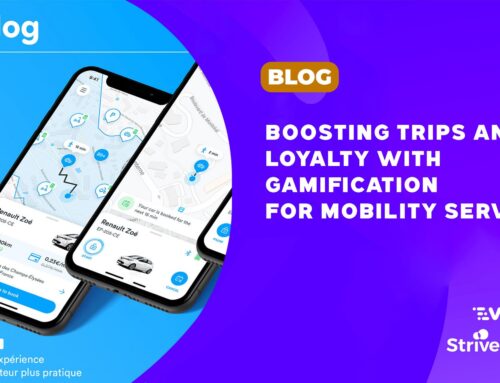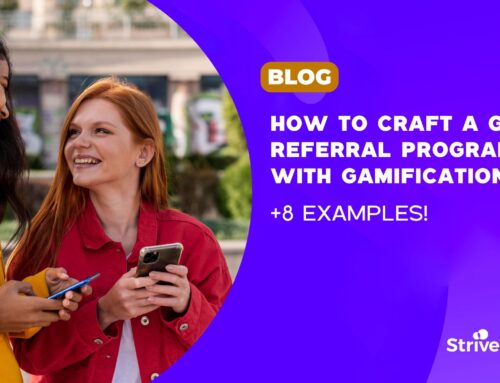Data survival: how to handle the death of the cookie
It has been one year since Google announced that it will kill all third-party cookies in the Chrome browser by 2022. Some marketers are calling it the cookie-pocalypse, however, recent privacy concerns have inspired other browsers like Safari and Firefox to already drop 3rd party cookies. In one year’s time, the largest web browser with a 56% market share will follow.
“Uses are demanding greater privacy, including transparency, choice, and control over how their data is used, and it’s clear the web ecosystem needs to evolve to meet these increasing demands.” – Justin Schuh, Director of Chrome Engineering @Google
So how can marketers prepare for this shift in data availability?
Here’s what we’ll cover:
Cookies are a small piece of data stored on the user’s computer to track user behavior and personalize experiences based on that data. Google’s ability to track users across websites made them the largest digital advertising network in the world.
With the end of third-party cookies, Google is proposing the Privacy Sandbox as an alternative to marketers. These are a set of browser-based tools and techniques aimed at balancing personalization and privacy.
Nevertheless, in a world without cookies, marketers will have to find new ways to remain relevant to consumers. While 91% of consumers prefer brands that customize the experience towards their preferences, they still find control over their data more important. Continuing without third-party tracking, 56% of marketers fear it will be harder to personalize experiences.
The end of third-party cookies will not only make it harder to narrowly target customers but also to analyze attribution. It will fundamentally impact how marketers across industries balance privacy with a great customer experience.
Why should marketers collect 1st party data now?
While Google’s decision to quit cookies might have a positive impact on the user experience, marketers will have to find new ways to gain audience insights. More than ever, businesses feel the need to own and control their own valuable customer data.
Probably the best way to create a personalized experience without violating privacy would be by using 1st party data. This is data created and stored by your own website or app. It tracks user behavior directly linked to your own communities.
“2020 is going to be the year the year of first-party data” – Martin Sorell, Founder@WPP
Not only is this method of data collection more privacy-friendly, but it’s also highly relevant to your business because it comes directly from your audience. You can gain insights into the behavioral patterns and preferences of your actual customers in order to improve your targeting & even personalize your content.
“With first-party data, marketers are playing the long game. They are fostering an ongoing relationship with their customers and prospects by better communicating and serving them.” – Andy Monfried, Founder@Lotame data management
So how do you go about collecting first-party data?
A better way of data collection with gamification!
What is gamification?
Let’s start off with the basics. Gamification is the use of game psychology in a non-game context. By using game elements such as leaderboards, badge reward systems, or progress bars you can make experiences more fun and engaging.
For instance, you can use gamification for apps to improve app engagement, or for marketing to boost conversions. Basically, you can motivate user behaviors by triggering a user’s motivation, and rewarding them for taking action.
Want to learn the ins and outs of how it works? Find everything you need to know on our ‘What is Gamification’ page!
How can you use gamification to collect data?
So, how does gamification for apps help me collect first-party data? Well, gamification motivates user behaviors by design. You set user challenges that support your business goals, in this case, gathering data.
For example, you make filling out your profile a challenge for new users. In return, users can collect points or badges. This way you’ll motivate people to fill out their profiles.
LinkedIn boosts profile completion with a simple progress bar!
Let’s look at some gamified examples!
A gamification tool to collect ski data
An excellent example of how to use gamification to collect data is Skitude. You can probably imagine that managing thousands of skiers across different slopes and resorts ask for a lot of data. But how do you convince skiers to give away their data?
Well, skiers can get a card embedded with an RFID chip. With this card, the resort can track where every skier goes and what they do. In return, users get access to their own statistics. The skiers can share their achievements on social media.
They can also compete against their friends or other skiers in the resort. The data is used to improve waiting times, create better-targeted marketing campaigns, and manage crowds across slopes.
Making education fun with gamification
Byju is the largest educational app in India. Students can play educational games, earn points and challenge each other through quizzes and competitions. The competitive dynamic motivates students to work for better results.
Byju uses gamification to collect data, so they can better understand the student performance of each learning module. They use this data to design more effective modules.
Gather more data with gamification for apps
A plug-in gamification tool to enrich your data collection
Gamification for apps can be used to collect more user data. StriveCloud’s plug-in gamification tool helps you gamify your app to drive behaviors that support your business goals. For instance, you can guide user behavior through contextual notifications and in-app messaging
By gamifying the user journey, you get to collect first-party data with every interaction the user has on your platform. Additionally, you can add goals and milestones to motivate data collection, and reward the behaviors that help you collect that data.
Reach your goals with gamification? Get a free gamification strategy workshop to see how it can work for you!
Your own gaming tournament platform
Having your own tournament platform allows you to build a community of highly engaged and loyal users. With such a userbase of fans comes a ton of first-party data. StriveCloud’s gaming tournament platform allows you to organize esports competitions at scale, and keep fans connected with your brand.
Kayzr for instance is the largest esports community in the Benelux. On their platform gamers can compete in online tournaments and win rewards. Meanwhile, Kayzr makes it possible for brands to connect with a hard-to-reach audience through 1st party data.
Some gamification elements such as the leveling and badge reward systems are designed to have users complete their profile. Other times challenges can help in gathering more data along the way. This data allows brands that advertise on Kayzr to build highly relevant and targeted campaigns.
.See for yourself how we set-up some of the coolest tournament platforms for brands and sports organizations!
Key takeaways
Only one year left until the cookie-pocalypse. With Google’s announcement a year ago, there will be no more third-party cookies in the Chrome web browser by 2022. Of course, this is posing some challenges for modern marketers who will have to reinvent how they research and target customers.
Here are our main lessons from the article:
Finding the right balance between privacy and personalization
While 91% of consumers actually prefer a personalized experience, the majority of them don’t like the thought of companies processing their data. Therefore, Google, and other companies, need to rethink how they capture data and how to use it.
First-party data is the new black
Everybody seems to agree on one thing. First-party data is the future. It’s more consumer-friendly and also more relevant to your business. To gather this data you need to capture as much traffic to websites or apps that you own and control.
Gamification for apps drives data collection
You can use gamification to increase the amount of data a user shares with you. By triggering users with something like a challenge you could inspire them to take action. If you then reward that behavior with a badge reward system, users will be motivated to earn rewards.
Brands can enrich their first-party data with tournament platforms
A tournament platform can help you build a special connection with a hard-to-reach audience. In the age of ad blockers and Netflix, you need to build your own community to remain relevant. Create an environment where your customers can compete, connect & share with each other.


